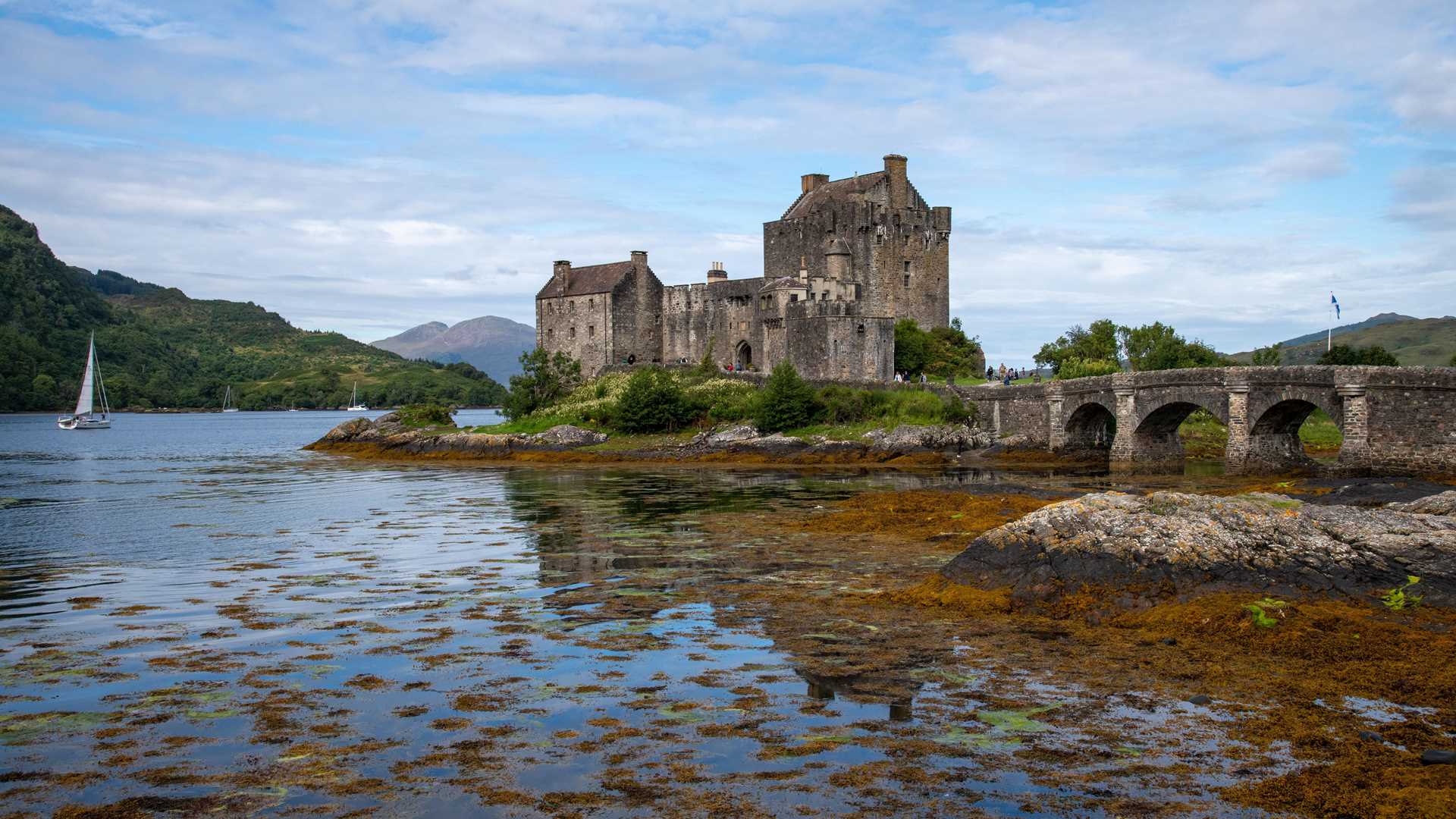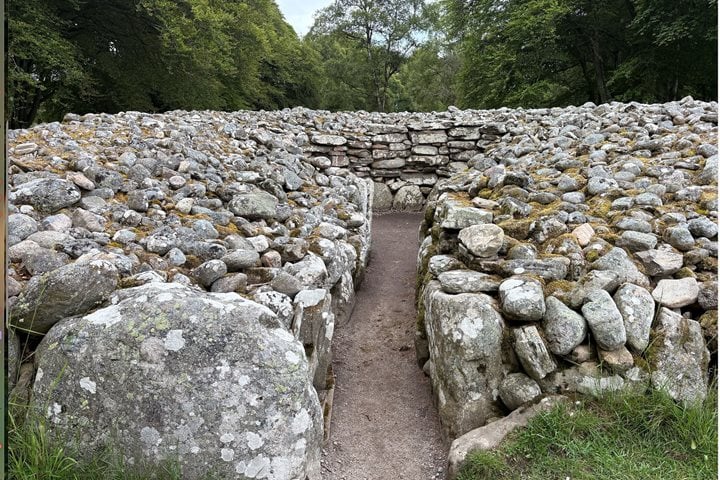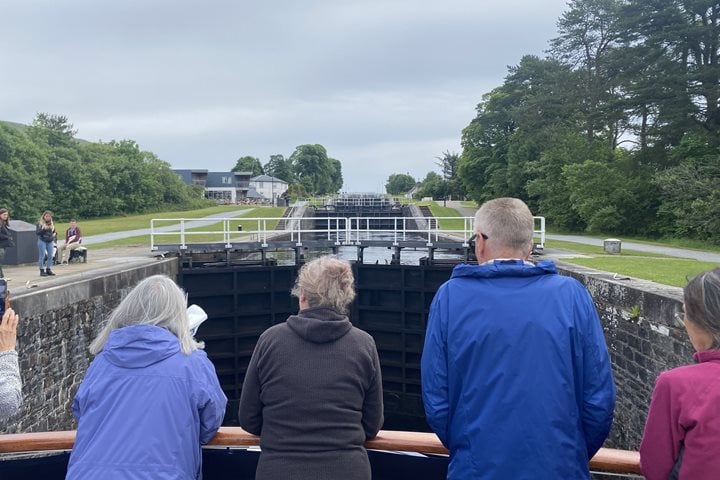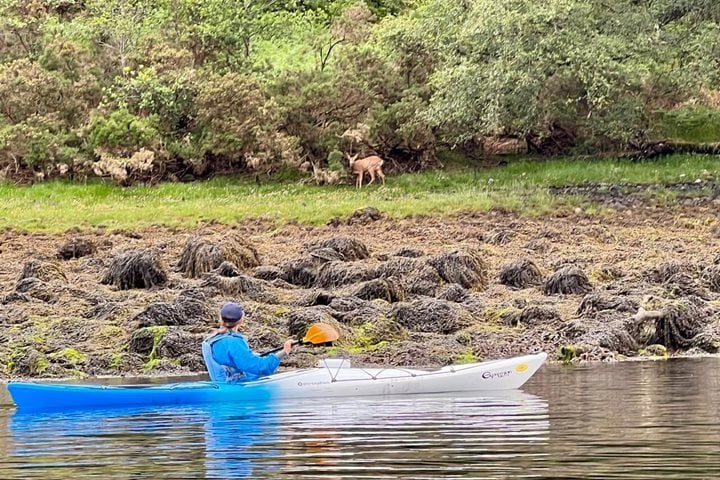We kicked off our morning with a short coach trip to Eilean Donan Castle, which is the most photographed castle in Scotland and has appeared in numerous films. While the castle was originally built in the 13th century, a large portion of the structure is from the 20th century when Lieutenant Colonel John MacRae-Gilstrap devoted his life to rebuilding the site and reclaiming it for the Clan MacRae. We arrived as the castle opened and took an audio tour of the interior. Afterwards, our photo instructor offered a photo walk for scenic views of the castle to take advantage of the blue skies.
During lunch, the ship sailed for Armadale on the Isle of Skye for a visit to Armadale Castle, and the Botanical Gardens and Museum of the Isles, the spiritual home of the Clan Donald. Built in 1815, the castle was reduced to ruins after a fire in the 1850s. The ruins offer a stunning view of the water, and the photogenic gardens are filled with giant cedar trees and hydrangeas. The museum’s detailed exhibit and audio guide provided a fantastic overview of the history of Clan Donald, Western Scotland, and the Highland Clearances.
After returning to the ship, we sailed to the Knoydart Peninsula toward the community of Inverie, a locally-owned commune that's only accessible by boat or a 17-mile walk from Kinlochourn. After dinner, Inverie residents Jackie and Ian Robertson hosted a talk about their community. Then we ventured out for a short walk and a drink of whiskey.
Call +1.800.397.3348 or contact your travel advisor







